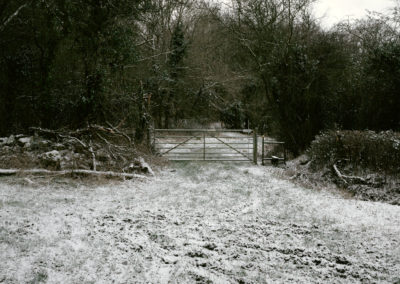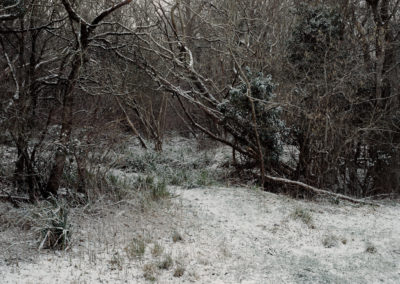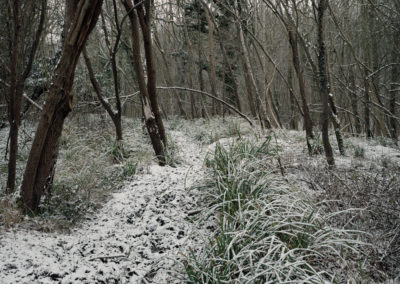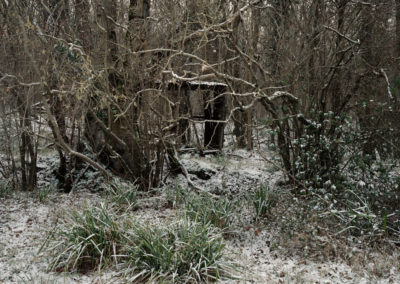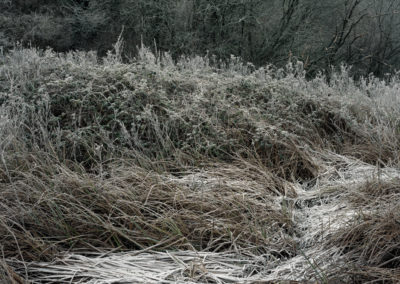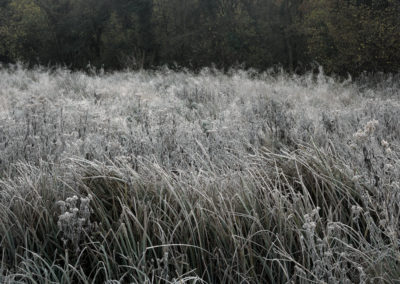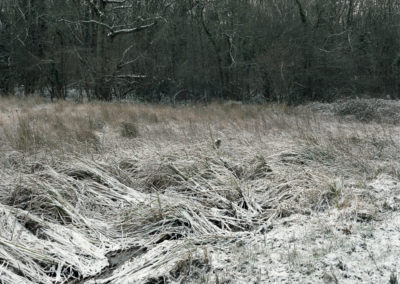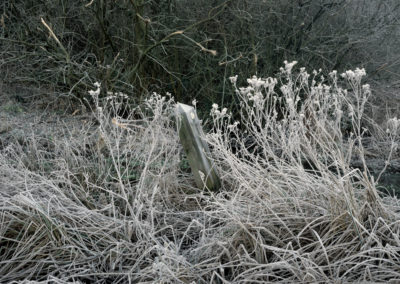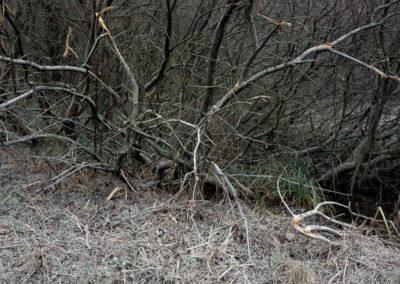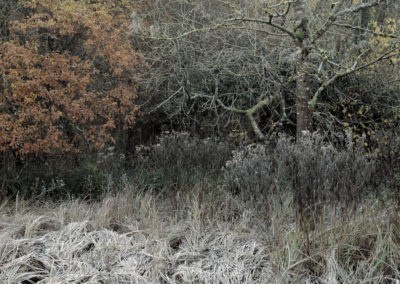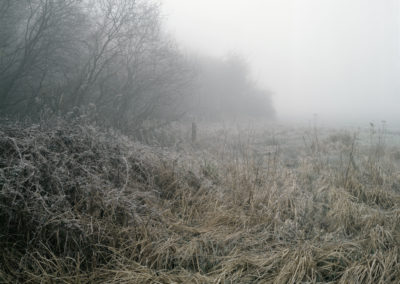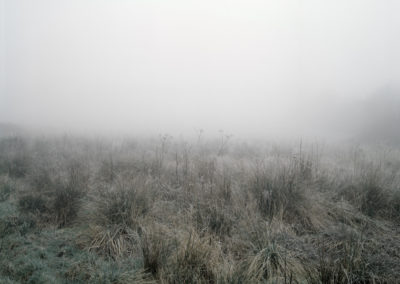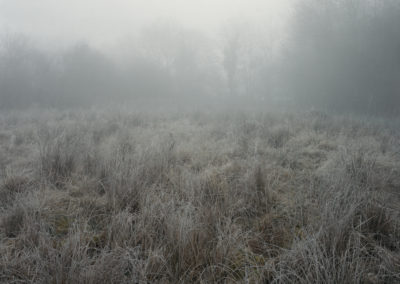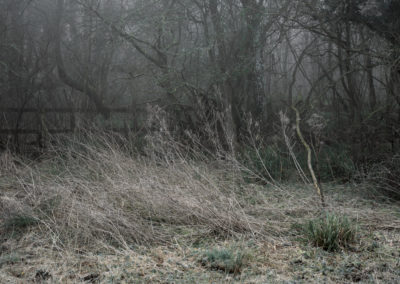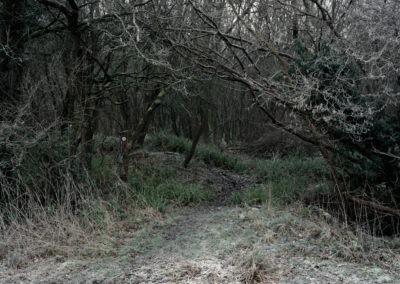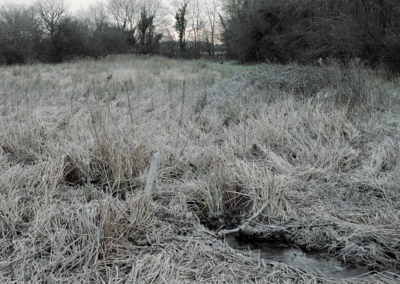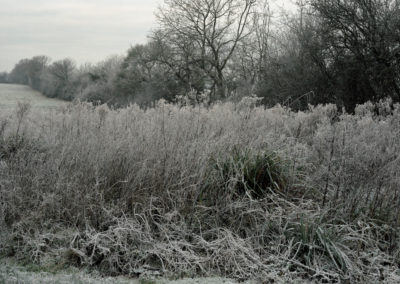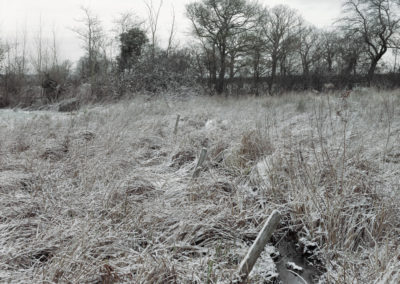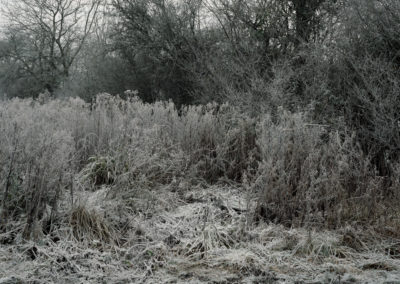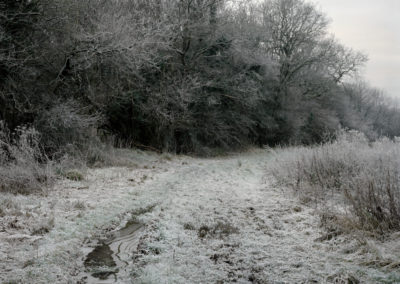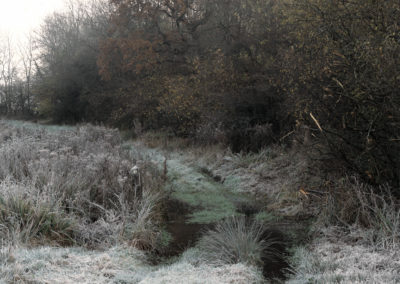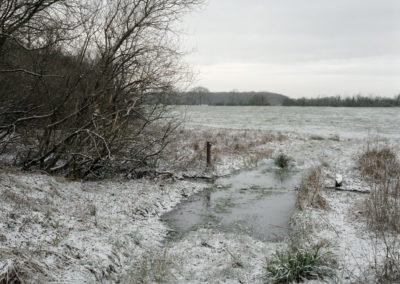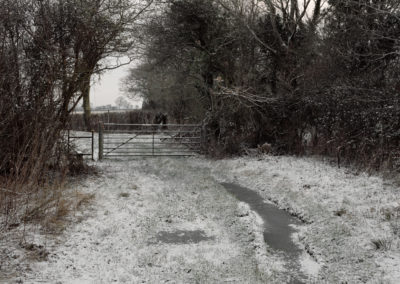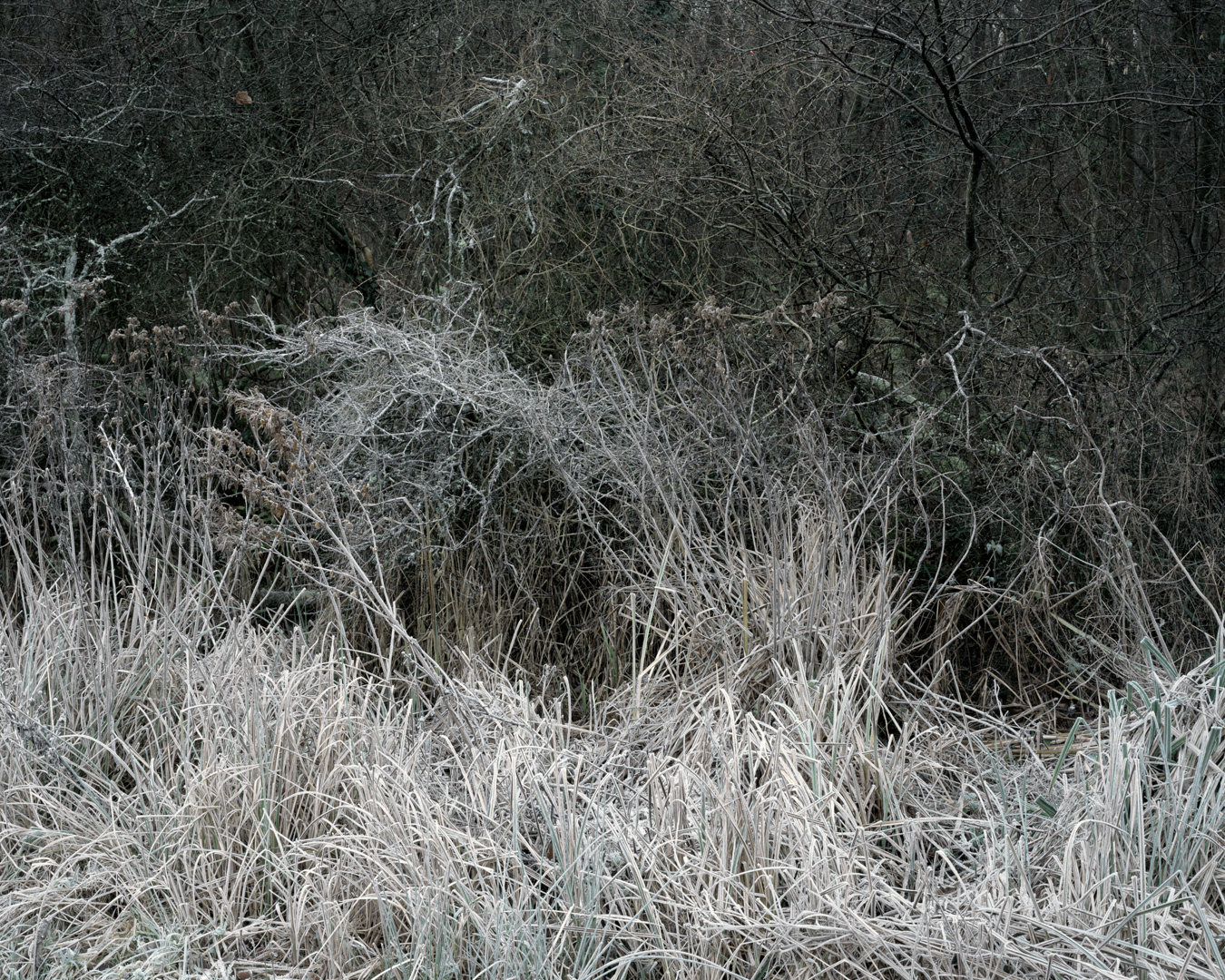
No Waste So Vacant enquires whether the beauty and connectedness of nature can be found in the least expected and often neglected places. The places often ignored because of our idealised perception of the pastoral and sublime landscape.
It was borne out of my foundational and ongoing work The Nature of Place. Here, I continue deeper down the line of enquiry I first introduced in The Floods. Indeed, this series was created in parallel and at the same time. Unlike The Floods, which covered an area of 5 square miles, I dedicated myself to one location within walking distance of home. Being able to comfortably walk to there was important, better that it took me down the green lanes and holloways.
The physical journey was to play an important role in developing my inner journey. A journey far enough that the rhythm of the walk created a sense of meditation, becoming introspective, allowing me to recognise my emotional state and help create a sense of receptive tranquillity. It allowed me to make work driven by response and spontaneity rather than something more predetermined.
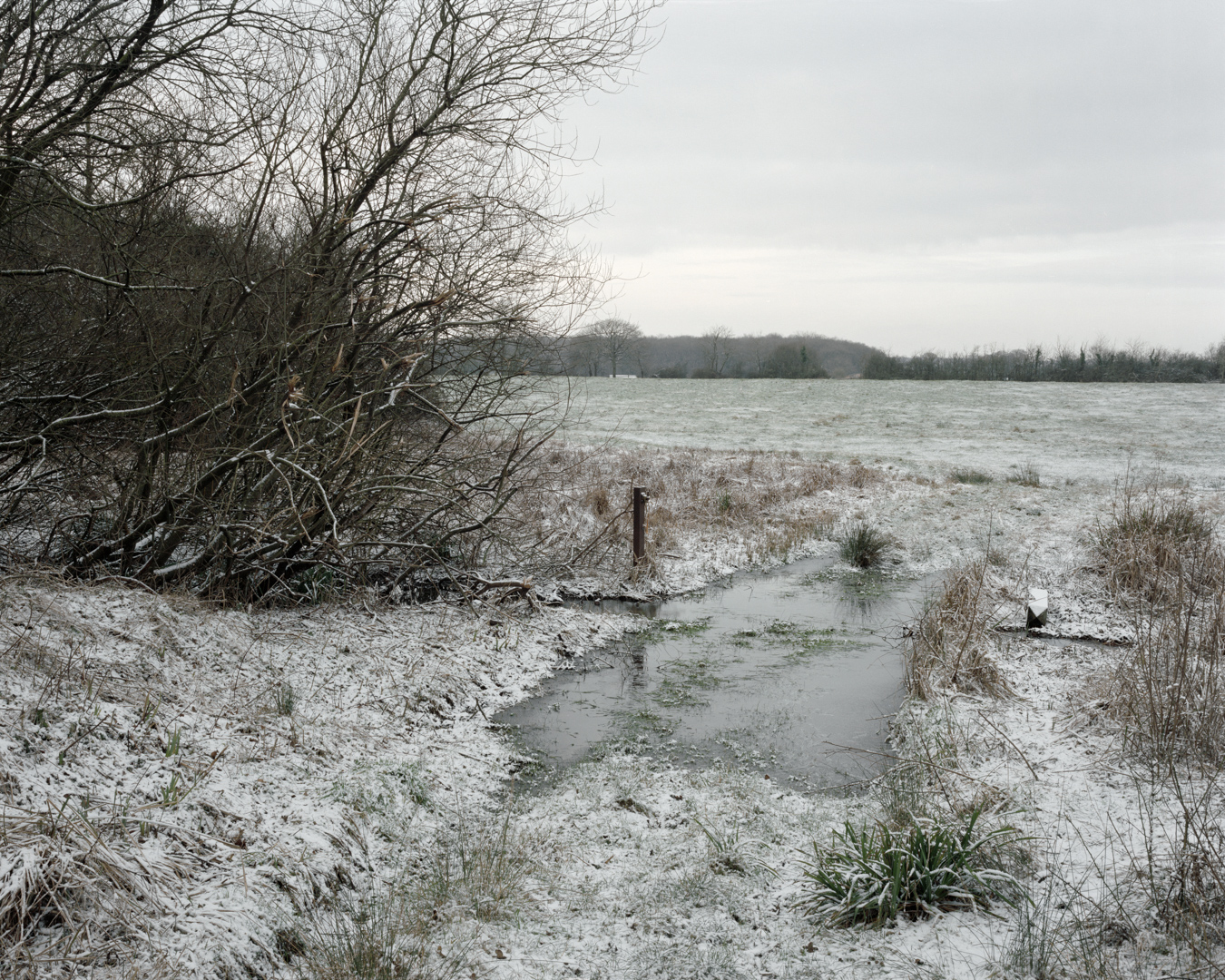
The location somewhat chose me, an area I’d frequently pass on my solitary wanders about the parish’s footpaths. It stood distinct to everything else around it. A triangular patch of countryside neglect less than half a rugby pitch in size that sat amongst grass pastures neatly manicured by livestock. It was clearly grazed by cattle, the telling sign being the grass was never less than a few inches, long enough for cattle to wrap their tongues around, whereas sheep if allowed would nibble to the stem.
Once part of one of the village commons, now a neglected scruff of land separated on one side from the productive pastures by a small winterbourne, land marshy through the wet months and overwhelmed by hassocks and reeds in the summer.
On the other edges, bounded by an un-topped hedge that marked the loss of the village commons to enclosure in the 18th century, and once managed ancient oak and hazel woodlands. A piece of land that locally would have been termed waste; land of no agricultural or commercial value. It was a familiar environment to me, likely to many folks who were also raised in a farming environment or who like to explore the outshifts.
There’s no need for me to further identify the location, it’s not important. What I wanted to achieve is possible in many similar places, freely accessible to all.
Over time I’ve come to understand that it’s not the surroundings and situation that are necessarily relevant for some of the subjects I explore. It’s about perspective and awakening to the potential that lies everywhere, nearest ourselves, even in the least obvious places. And that anyone who has an appreciation for landscape and nature can find wonders anywhere.
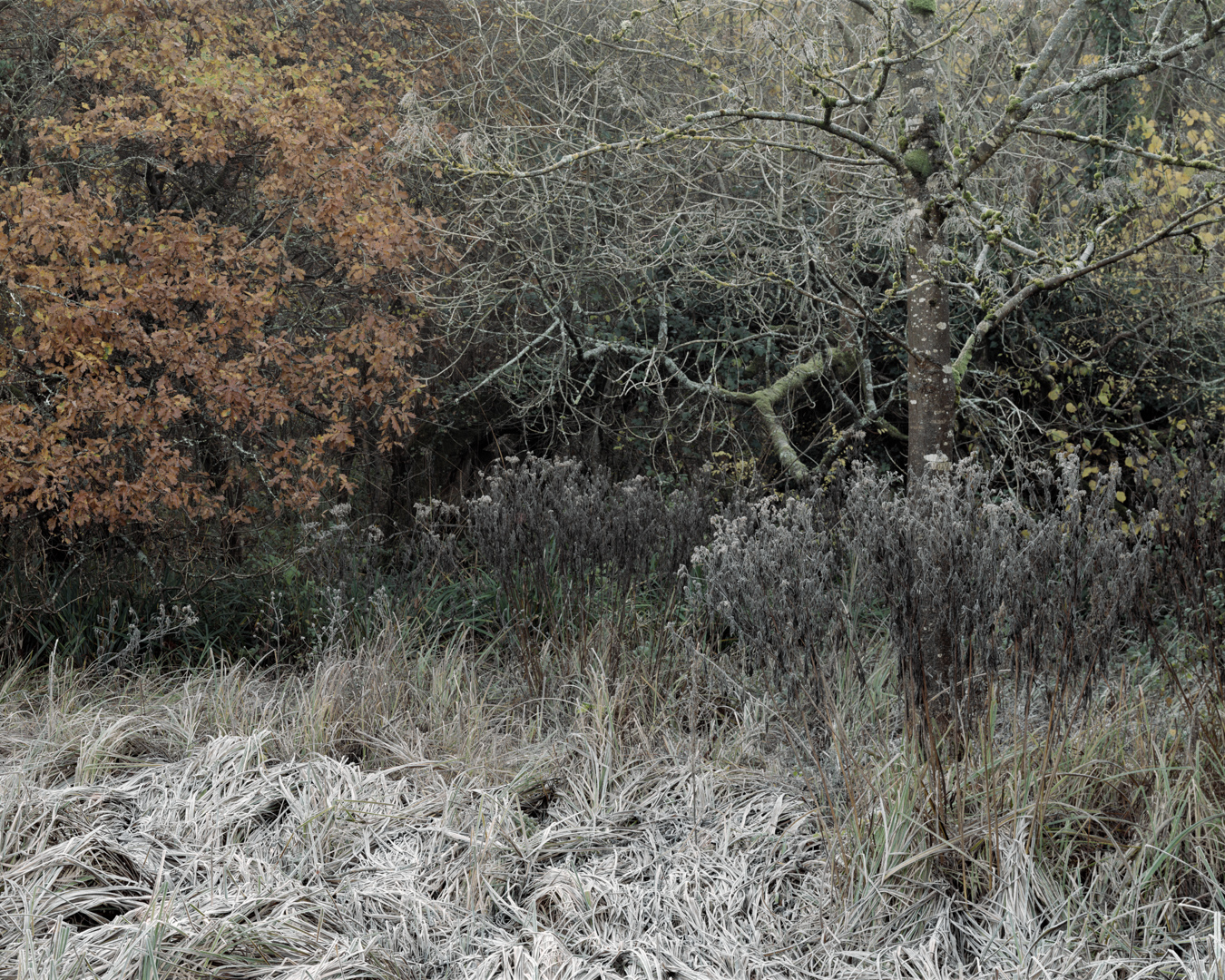
I obsessed over this spot, visiting sometimes daily and at least weekly until, after 18-months, I was done. It was an exercise that demanded solitude.
In both The Floods and in this series my intent was to create work characterised by quiet emotion, my free expression and authentic reaction to the beauty of nature in its oft over-looked forms. I’ve tried to eschew the interference of any rules and the influence of other’s work, in an attempt to develop a photographic response that feels authentic to me.
One area where I struggled was in verbalising these intentions – the basis of my work, why I do what I do. It’s one of the reasons this series has sat so long unseen. Not least titling the work, for so long ‘untitled’, a series borne out of the freedom to explore and imagine.
Recently, whilst reading about the early Romantic movement, the pieces began to fall into place. I came across a passage written by poet Samuel Taylor Coleridge that succinctly expressed what I hadn’t been able to with my own words.
No plot so narrow, be but Nature there,
No waste so vacant, but may well employ
Each faculty of sense, and keep the heart
Awake to Love and Beauty!
Extract from This Lime-Tree Bower My Prison by S.T. Coleridge
A selection of images from the winter season of Joseph’s No Waste So Vacant series are shown below (click to view image at full size / original format).
ABOUT JOSEPH WRIGHT
Joseph Wright (b. 1963) originates from Cambridgeshire, but is now based in the village of Purton near Swindon in Wiltshire and has spent much of his life living and working in semi-rural locations. His artistic work includes photography and book making, firmly of the opinion that photographs are best viewed in printed form, preferably books.
He is best known for his evocative and multi-layered landscape images that reveal stories of the land, how we inhabit it and how it affects us, developed through an understanding coming from his life long relationship and deep affinity with the countryside and edgelands. His work is instinctive in response to place and event. It is frequently rooted in history, toponymy and topography. He unwinds time and peels back the layers of culture and memory creating work to move beyond the simple aesthetic to reveal a deeper understanding of his subjects.
Joseph is a founding member of the Inside the Outside (ITO) collective.
Website: josephwright.co.uk
Twitter: @JoeARWright
Instagram: @JoeARWright
He is also the founder of JW Editions; an independent publisher of photobooks, who produce short run commercially produced edition based releases, and handmade artist limited editions.
Website: jweditions.co.uk
Twitter: @JWEditions
Instagram: @JWEditions
Unless otherwise stated, all words and images in this article are © Joseph Wright

